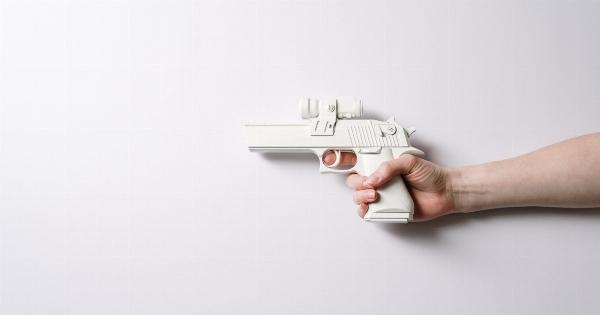Using plastic containers in the microwave has become a common practice in many households. However, there are several dangers associated with heating plastics in the microwave that people should be aware of.
While convenience is important, your health should always come first. In this article, we will discuss the potential dangers of using plastic containers in the microwave and provide tips on how to avoid them.
Danger 1: Chemical Leaching
One of the biggest concerns with heating plastic in the microwave is the potential for chemical leaching. Many plastic containers contain harmful chemicals such as bisphenol A (BPA) and phthalates.
When these containers are heated, these chemicals can leach into your food, especially when the plastic is old or damaged. Studies have shown that these chemicals can disrupt hormone regulation, potentially leading to various health issues.
Danger 2: Release of Toxins
When certain types of plastic are heated, they can release harmful toxins into your food. For example, polystyrene is a commonly used plastic that is often found in takeout containers and disposable coffee cups.
When heated, it can release styrene, a potentially carcinogenic substance, into your food. Over time, repeated exposure to these toxins can have serious health consequences.
Danger 3: Melting and Warping
Plastics have a low melting point, which means that they can easily melt or warp when exposed to high temperatures. When you heat plastic containers in the microwave, there is a risk of them melting, deforming, or even catching fire.
This not only ruins your food but can also cause damage to your microwave and pose a safety hazard.
Danger 4: Potential for Hot Spots
Another danger of using plastic in the microwave is the potential for hot spots. Plastic does not heat evenly like glass or ceramic, which can lead to unevenly heated food.
Hot spots can not only cause burns when touching the container but also result in undercooked or overcooked food. This uneven heating can also affect the texture and taste of your meal.
Danger 5: Difficulty in Cleaning
Plastic containers used in the microwave can become discolored, stained, or warped after repeated use. The heat from the microwave can cause oils, fats, and food particles to adhere to the plastic surface, making it difficult to clean.
This can create a breeding ground for bacteria and other microorganisms, increasing the risk of foodborne illnesses.
Tips to Avoid the Dangers of Plastic in the Microwave
While it is best to use alternatives like glass or ceramic containers for heating food in the microwave, if you still choose to use plastic, there are some precautions you can take to minimize the risks:.
1. Use microwave-safe plastic
Look for containers labeled as “microwave-safe” or with a microwave icon on them. These containers are made from materials that are specifically designed to withstand high temperatures and reduce chemical leaching.
2. Check for damage
Before using plastic containers in the microwave, check for any signs of damage such as cracks, warping, or discoloration. Damaged plastic is more likely to release harmful chemicals into your food when heated.
3. Avoid plastics with recycling codes 3, 6, and 7
Some plastics are more likely to release toxins when heated. Avoid using containers with recycling codes 3, 6, and 7, as they are often made from materials such as polystyrene, polycarbonate, and PVC, which can leach harmful chemicals.
4. Use microwave-safe covers
If you need to cover your food while heating it in the microwave, make sure to use microwave-safe covers such as glass lids or microwave-safe plastic wraps. This helps to prevent splattering and keeps your food safe.
5. Transfer food to glass or ceramic
If you have leftover food in a plastic container, transfer it to a glass or ceramic dish before heating in the microwave. This reduces the risk of chemical leaching and ensures even heating.
6. Keep the lids slightly open
When using plastic containers with lids, it is advisable to keep the lids slightly open to allow steam to escape. This helps to prevent pressure buildup and reduces the likelihood of deformities or explosions.
7. Allow cooling time before handling
After heating food in a plastic container, allow it to cool for a short period before handling it. This reduces the risk of burns and prevents the plastic from becoming too soft or deformed.
8. Opt for alternatives
If possible, consider using glass, ceramic, or silicone containers for heating food in the microwave. These materials have a higher heat resistance and do not release harmful chemicals into your food.
9. Choose paper or cloth covers
Instead of using plastic wraps or covers, opt for paper towels or cloth covers when heating food in the microwave. These options are safer and do not pose the same risks as plastic.
10. Regularly replace old containers
Plastic containers deteriorate over time, especially with repeated use and exposure to heat. Regularly inspect your plastic containers and replace them if they show signs of wear and tear. It is better to be safe than sorry when it comes to your health.






























